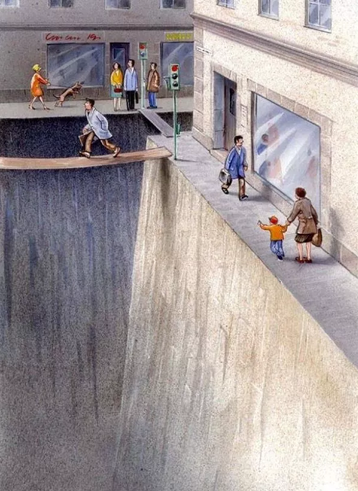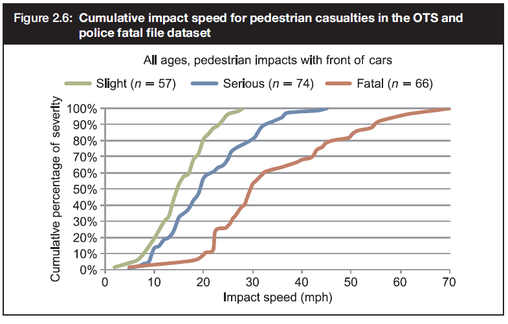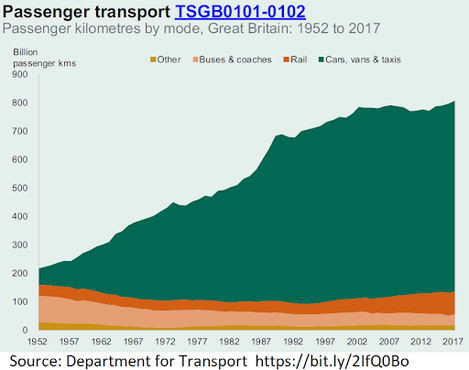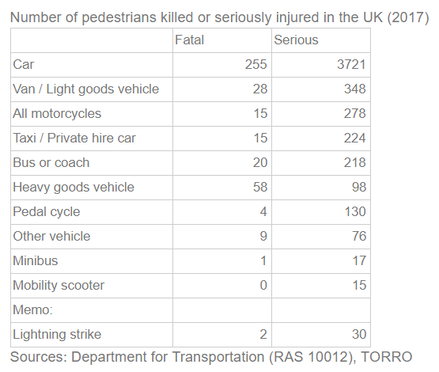|
"Electric cars are the answer to today's challenges of air poisoning and climate change." Such a narrative is comforting for society and government. After all, it allows business-as-usual, with a few tweaks here and there. And that's why it's a disaster for liveability. Business-as-usual is killing us, maiming us and severing our communities. Even the 'green' credentials of electric vehicles don't entirely stand up to scrutiny. The government's Air Quality Expert Group last week stated that "particles from brake wear, tyre wear and road surface wear currently constitute 60% and 73% (by mass), respectively, of primary PM2.5 and PM10 emissions from road transport" (AQEG 2019). In other words, more of the particulate pollution in our brains, placentas and heart lining is due to non-exhaust features of cars than to the exhaust itself. We are also turning a blind eye to the carbon embedded in the manufacture of cars, as well as the negative externalities associated with commodity extraction for batteries, metal and plastic. Even if you haven't or don't question electric vehicles' green attributes, overlaying them in place of petrol and diesel ones perpetuates the liveability dilemma. Cars project an envelope of danger around them. A modest volume of car traffic transforms the street into a no-go area. For the very young and old, the public realm -- i.e. space outside, in built-up areas -- is too often a small strip on the margins of an abyss. Here's what I mean: Cars are 3-tonne hulks; humans are squishy 10-stone things. If you are hit by a car, the probability of survival is an exponentially decreasing function of that car's speed. The figure below reports that about half of the fatally injured pedestrians in a 2010 Department for Transport dataset were hit at an impact speed of 30 mph or less. On the residential estate of Florence Park, Oxford, I sometimes hear from our elder residents that "the streets used to be safer" or that "kids used to play in the streets". In my view, what's changed isn't X-Boxes or iPads. It's cars. I've heard many residents say it: There are simply more cars on the road today. The UK overall numbers bear that out: Combine cars' envelope of danger and their ubiquity and you get four thousand pedestrians killed or seriously injured in the United Kingdom in a single year (see table). For the sake of convenience and business-as-usual, cars get a special exemption from society's critical thinking. It's as if we are victims of a transport-oriented Stockholm syndrome. So the envelope of danger is real. But the casualties go further. Cities, towns and neighbourhoods are places where people are meant to mingle. That's less likely where the public realm is so dominated by danger. People don't normally like to gather or just casually hang out on the margins of a cliff. Donald Appleyard, the UK-born academic, twigged this forty years ago. In Livable Streets, Appleyard presented his research into San Francisco's neighbourhoods. The upshot was that residents of neighbourhoods with busy roads reported far fewer social connections on their street. It's well worth looking at this video inspired by Appleyard's research and checking out people who cite Appleyard as an inspiration for their own work. Appleyard was actually a latecomer to liveability. A decade earlier, Amsterdam kids were actively fighting the onslaught of cars, as documented in this must-see vignette from 1972. Electric vehicles change none of this. As my friend Danny Yee says, the volume of cars on the roads should be reduced by 80%, and the remaining 20% should be electric. To worry about the latter and not the former is no solution at all. It's business as usual. So what is to be done? I'll sketch that out in the next blog post. SOURCES Air Quality Expert Group (2019), "Non-exhaust emissions from road transport" (DEFRA) Appleyard, D. (1981), Livable Streets (University of California Press) Department for Transport (2018), "Transport Statistics Great Britain" Richards, D. (2010), "Risk of fatal injury: Pedestrians and car occupants", Department for Transport (London) The Tornado and Storm Research Organisation (TORRO) This blog contains the opinions of the author and does not necessarily reflect the opinions of any of the Co-CAFE team or Oxford Brookes University.
0 Comments
Leave a Reply. |
AuthorsCo-CAFE is led by Tim Jones (Reader in Urban Mobility) with Ben Spencer (Research Fellow) and Tom Shopland (Co-CAFE project administrator) based in the School of the Built Environment at Oxford Brookes University. Archives
February 2020
Categories |
|
Oxford Brookes University
School of the Built Environment +44 1865 48 4061 |
|
Funded by the Lifelong Health and Wellbeing cross-Council programme. Grant No. EP/KO37242/1
|





 RSS Feed
RSS Feed


